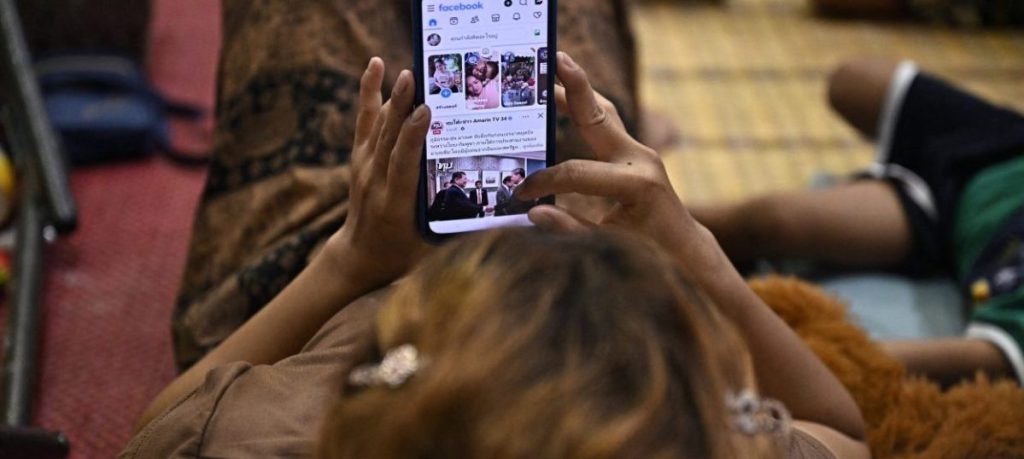Thai-Cambodian Border Dispute Escalates into Digital War Zone
The simmering tension along the Thai-Cambodian border has erupted once again, not only with physical skirmishes but also with a fierce battle waged in the digital realm. This information war, fought with hashtags, manipulated videos, and distorted narratives, has become a crucial front in the conflict, blurring the lines between traditional warfare and cyber operations. While both sides utilize social media to their advantage, their strategies differ significantly. Thailand employs a campaign of “crowdsourced nationalism,” leveraging hashtags to galvanize public support and frame Cambodia as the aggressor. Cambodia, on the other hand, resorts to more deceptive tactics, disseminating disinformation and fabricated videos to control the narrative and portray itself as a resilient defender.
The Royal Thai Army has actively promoted hashtags such as #ไทยนี้รักสงบแต่ถึงรบไม่ขลาด (Thais love peace but are not cowards) and #กัมพูชายิงก่อน (Cambodia fired first), effectively mobilizing public opinion against Cambodia. This strategy seeks to portray Thailand as the victim of unprovoked aggression and justify its military response. This “information mobilization” tactic transforms citizen participation on social media into a potent tool for amplifying state-sanctioned narratives. The Thai military’s social media posts directly encourage citizens to utilize these hashtags, further solidifying the desired narrative and creating a sense of national unity against a perceived external threat.
In stark contrast, the Cambodian government, along with state-aligned media and online influencers, has employed a more aggressive form of information manipulation. Prime Minister Hun Sen, on his official Facebook page, labeled the conflict as a response to Thai aggression, despite the chaotic nature of the fighting, which makes it difficult to definitively determine who initiated the hostilities. This counter-narrative is further bolstered by the dissemination of manipulated content. A prime example is a fabricated video purporting to show a Thai jet being shot down by Cambodian forces. This video, later identified as recycled footage from the Russia-Ukraine war, served to project an image of Cambodian military prowess and solidify the narrative of Cambodia as the underdog bravely resisting a more powerful aggressor.
This stark divergence in online tactics highlights the evolving nature of warfare in the digital age. Thailand’s focus on amplifying nationalist sentiment through organic hashtag campaigns stands in contrast to Cambodia’s reliance on fabricated content and distorted narratives. Both approaches, however, demonstrate the increasing importance of information control and manipulation in shaping public perception and influencing the course of conflicts. The “fog of war,” traditionally associated with the battlefield, has now permeated the digital sphere, making it increasingly difficult to discern fact from fiction. Every smartphone, wielded by soldier, journalist, or citizen, has become a potential weapon in this information war.
The Thai-Cambodian cyber conflict exposes a critical gap in international humanitarian law (IHL). While IHL regulates physical attacks, it currently lacks clear provisions for addressing deception and information manipulation in conflict zones. This legal ambiguity allows states and non-state actors to exploit digital platforms to spread disinformation, incite violence, and further their own agendas, often with devastating humanitarian consequences. The International Committee of the Red Cross has highlighted how disinformation can endanger civilians, obstruct humanitarian aid, and fuel retaliatory violence. In the Thai-Cambodian context, the spread of false narratives has inflamed public sentiment, making de-escalation increasingly challenging and fostering a climate of fear and mistrust.
The current IHL framework, primarily focused on physical acts of violence, struggles to adequately address the complexities of information warfare. While certain forms of disinformation, such as those inciting war crimes or directly targeting protected persons, may fall under existing prohibitions, the broader landscape of online manipulation and deception remains largely unregulated. This legal lacuna underscores the urgent need for the international community to develop clear legal frameworks and operational guidelines to address the unique challenges posed by disinformation in modern conflicts. A revised IHL should explicitly address information influence operations, particularly those involving disinformation that could harm civilians caught in conflict zones, ensuring accountability and protecting vulnerable populations. The Thai-Cambodian case serves as a stark reminder of the urgent need to update international legal frameworks to effectively address the increasingly complex landscape of modern warfare, where the digital front lines are as critical as the physical ones.


